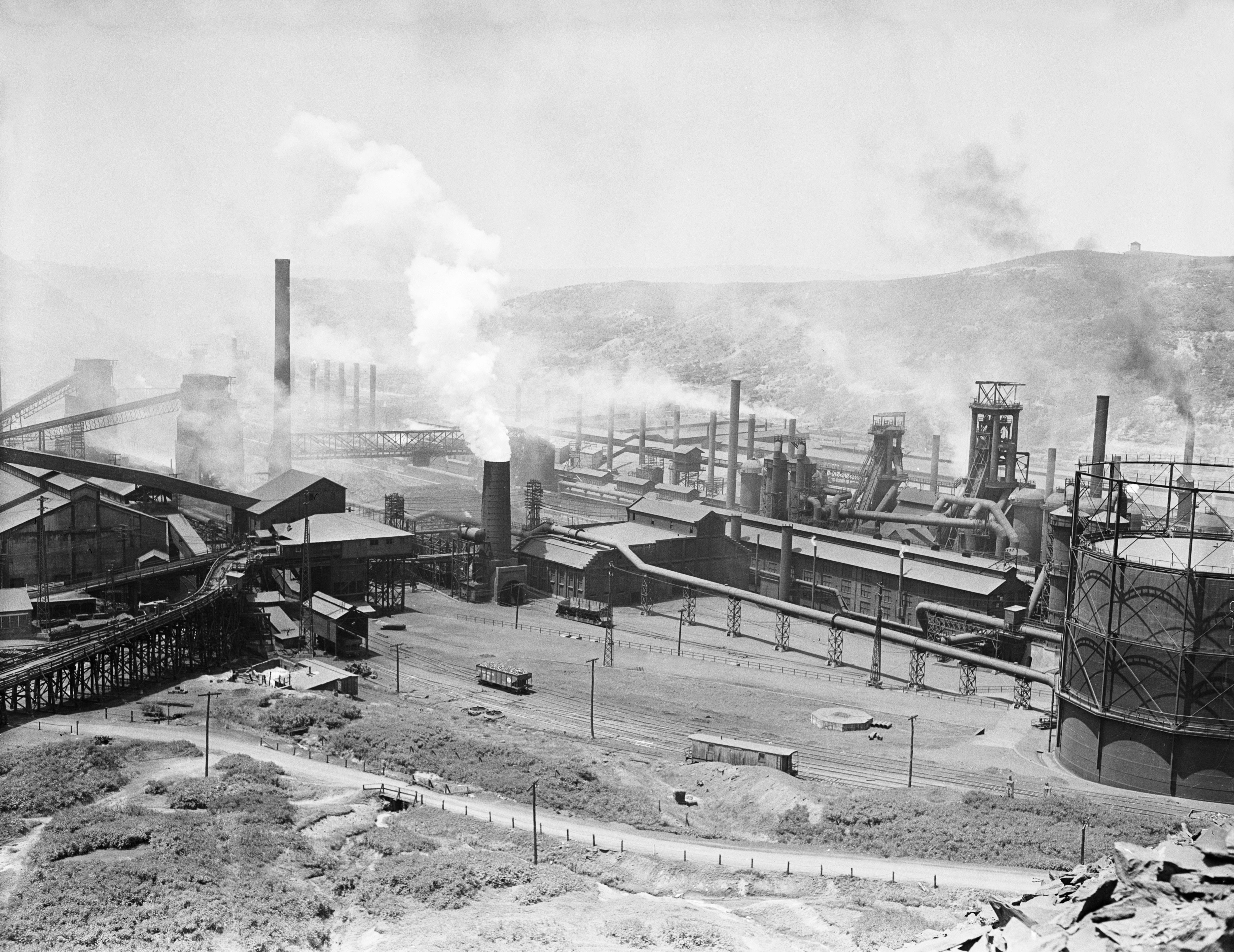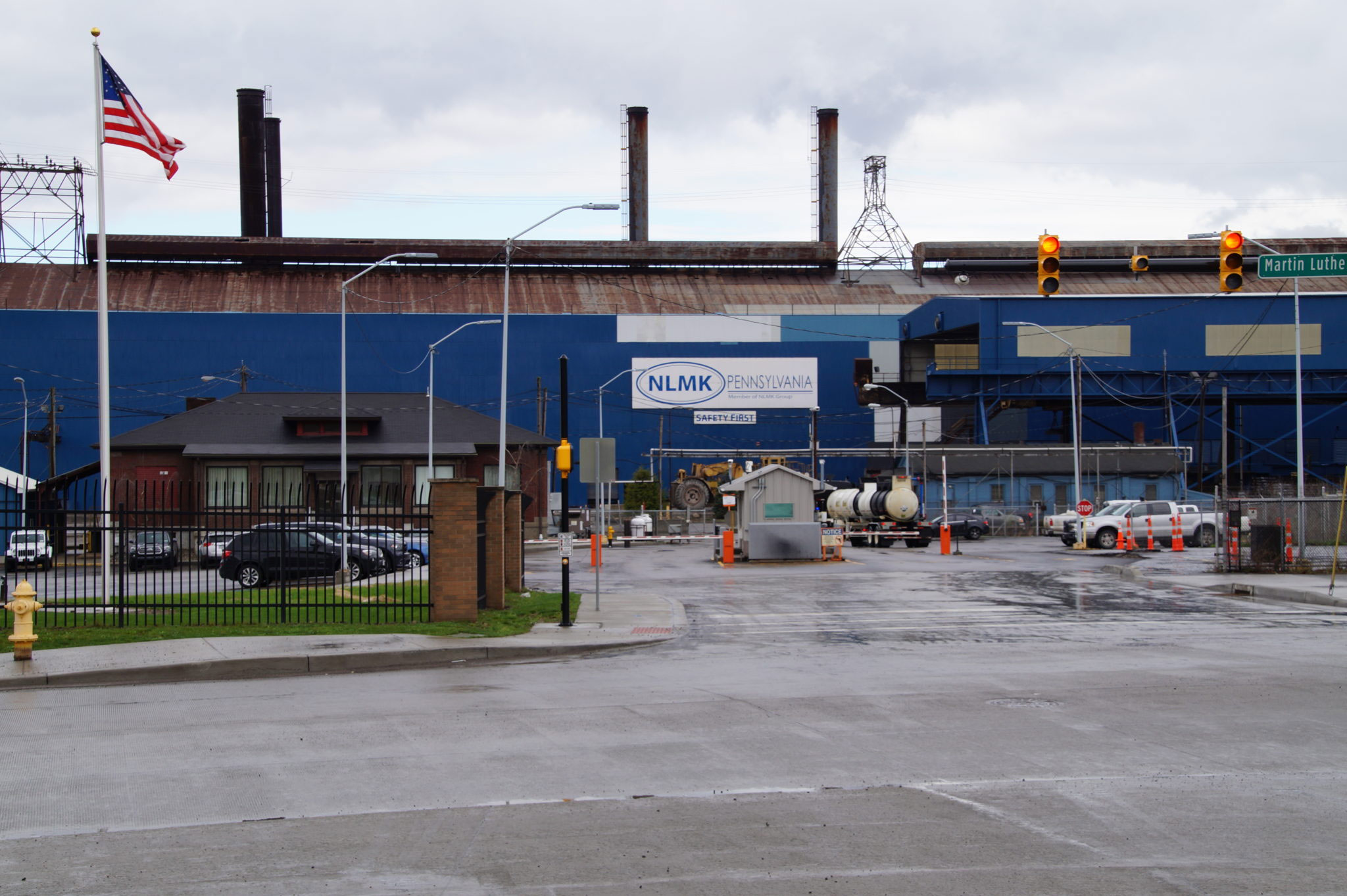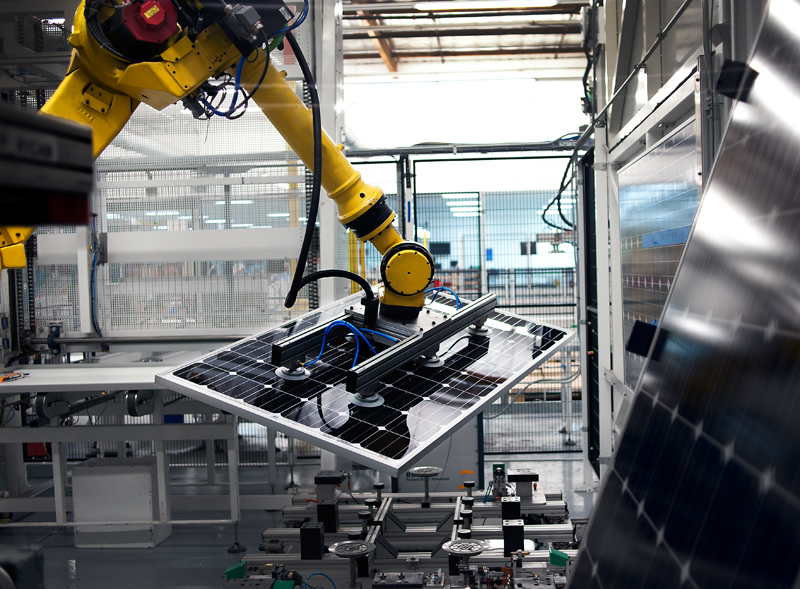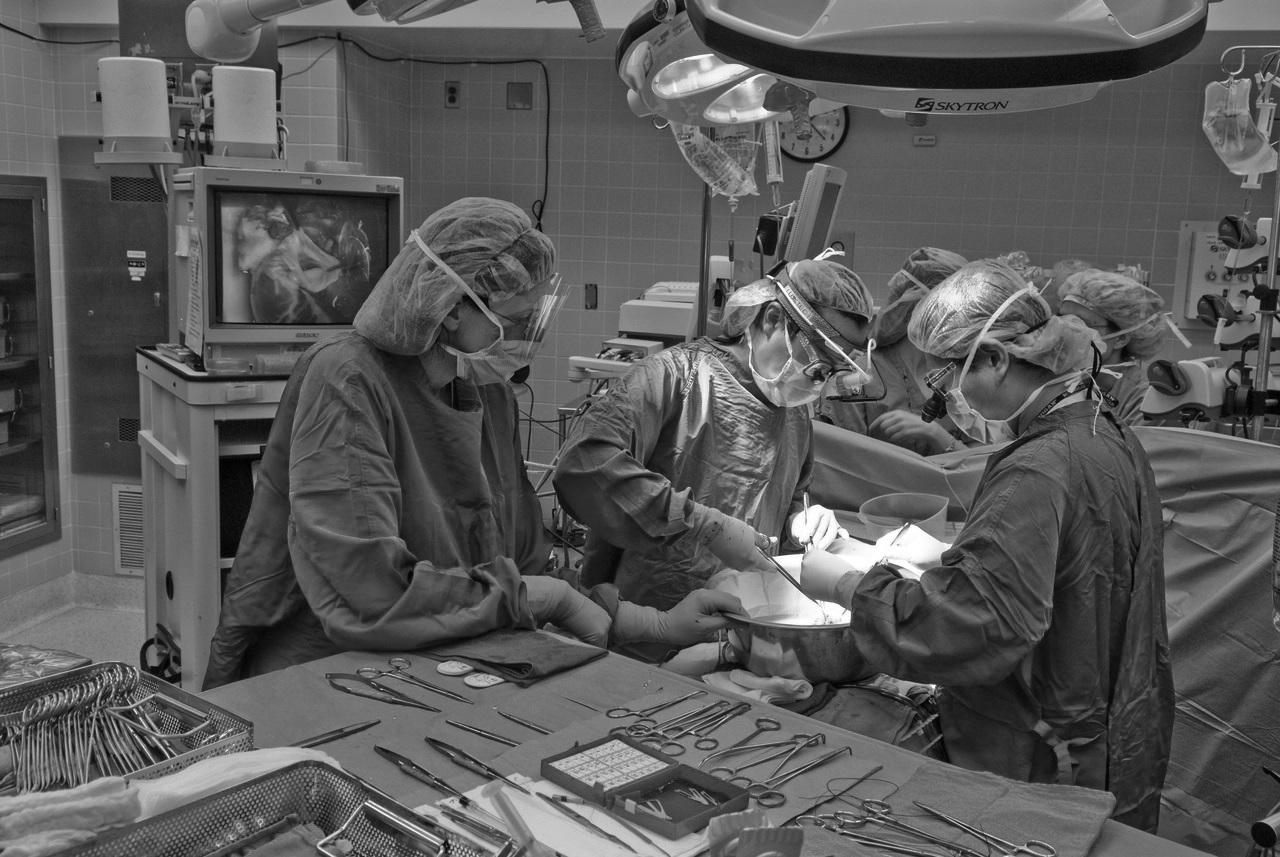The Rust Belt Recovery Act: My Plan for Rebuilding the American Dream
During the 20th century, the Shenango Valley supplied the steel that helped America win two world wars.
Unfortunately, since the steel industry began to decline in the 1970s, we’ve been losing battle after battle in the brutally competitive global economy.
It’s time for us to start winning again so we can rebuild the American Dream.
My Rust Belt Recovery Act will enable us to create a Prosperity Corridor within Mercer County that runs from Greenville to the southern border of Mercer County.
We’ll create the corridor by utilizing the valuable assets we have and investing in what we need so we are prepared to attract the industries that will drive the economy in the 21st Century.
Mercer County: One of the best locations in the nation
Some of the nation’s main transportation arteries run through the heart of Mercer County. We are a one-day drive or less from 60% of all the U.S. effective buying income, 55% of all U.S. manufacturing, 50% of the U.S. population 41% of all U.S. households, New York, Chicago, Philadelphia, Washington, Boston, Detroit, Baltimore, and Cincinnati, less than two hours from Cleveland and less than an hour from Pittsburgh.
That means we should be a hub for logistics and order fulfillment for Amazon and other firms.
Instead, trucks and rail cars filled with goods loaded by workers in other areas, pass right through without even slowing down.
We’re losing out despite our location because we haven’t made the infrastructure investments needed to attract the companies that are creating jobs in one of the fastest growing industries in America.
As our next County Commissioner, I’ll fight for the dollars we need to enhance our roads, bridges, railways, and connectivity because today Internet access represents one-third of the criteria companies use to measure infrastructure strength. Today, Pennsylvania is ranked 19th in the nation in internet access. To attract new jobs we need to be in the top five. We have the capability starting at Linden Pointe in Hermitage.
Energy resources that will drive growth and development
Energy extraction and related industries, including the $6 billion cracker plant now under construction near Mercer County will create jobs and growth for years to come. Because I share everyone’s concerns about environment, I believe revenue derived from fracking should be used to fund research that will make the process safer and safer in the years ahead.
I also believe a portion of the revenue should be used to perform R&D and subsidize the manufacture of the types of green energy technology that will make fossil fuels obsolete in the future. In other words, I believe the industry should finance its own demise and that Mercer County should become the center of production for solar cells, wind turbine components, batteries for electric cars and hydrogen fuel cells.
Emphasis on Regionalization
We need to work more closely with our friend to the West. The Mahoning and Shenango Valleys share many things. We need to work together more closely to identify opportunities for regional growth and development that will enable us to compete with major metropolitan areas for projects like Amazon HQ2.
Identify and prepare to attract the industries of the future
Our community rose and fell with the steel industry. And while we should always seek and attempt to attract heavy manufacturing, the key to the future lies elsewhere. In large part, that’s because the steel industry is radically different than it was three decades ago.
The Vallourec Plant in Youngstown underscores this fact. The facility, which cost $1 billion to construct, employs 600 people to produce pipe for the energy industry. Two generations ago, a plant producing the same type of pipe would have employed 3,000 to 4,000 workers.
So while we absolutely want the next Vallourec-type mill to be located here, we must also begin to identify and prepare to attract the industries that will generate growth for the next 50 t0 75 years.
Those jobs involve high-tech and green energy. Consider this: GM recently announced that it is in the process of abandoning the internal combustion and moving toward an all-electric vehicle future. That means the company will need billions of car batteries and hydrogen fuel cells. They should be made here.
The Trump administration just slapped a tariff on solar panels made in China. That could, potentially, shift production back to the U.S. That production should take place here.
Across the country electric utilities are mothballing coal-fired plants and building new gas-powered facilities, but most acknowledge that they view gas as a transitional fuel that will give way to renewables soon. We should be in the renewable business now.
What we need to do
It’s not a mystery. In fact, the criteria Amazon established for the location of its new headquarters facility is a road map for effective economic development in the 21st Century.
Here’s what they are looking for:
- Metropolitan areas with a population of over 1 million
- A stable and business-friendly environment
- Within 30 miles (48 km) of a population center
- Within 45 minutes of an international airport
- Proximity to major highways and arterial roads 1–3 miles (2–5 km)
- Access to mass transit routes
- Up to 8 million square feet (740,000 m2) of office space for future expansion
- Skilled and highly educated workers who hold degrees that matter in the modern economy.
- A community in which the K-12 schools focus on STEM curriculum
- Mass transit
- Cultural opportunities and outstanding quality of life including low crime rates and great public schools
We have many of these assets. We need to acquire those we don’t, beginning with improving our public schools and making higher education more affordable.
It’s not an accident that the greatest growth in the size and living standards of the middle class occurred in the Post-World War II era when unions were strong. That’s because no single factor does more to increase wage and benefit levels than union membership.
My Rust Belt Recovery Act will strengthen the assets we have and enable us to obtain what we need. Once implemented, we’ll be on our way to rebuilding the American Dream.


Preserving and Protecting Social Security
By any measure, Social Security is the most successful government program in American history. When it was created, more than half the nation’s seniors lived in poverty. Today, the poverty rate among the elderly has fallen to ten percent—that’s still too high, but it does represent a significant improvement in the quality of life for tens of millions of people.
Today, the program is more important than ever. Over half of workers between the ages of 55-64 have no retirement savings, more than one-third of seniors depend on SS for virtually all their income, and one out of five is trying to scrape by on an average of just $8,300 a year.
Despite the crucial role SS plays in the life of Americans and its proven success, Republicans continually attack the program and question its solvency. They say the program must be cut or privatized if it is to survive.
That’s just not true. Yes, the system does face some long-term challenges, but destroying it isn’t the answer.
The solution favored by Senator Bernie Sanders, financier Warren Buffet and other thought leaders who value SS, lies in erasing an inequity that has existed since program’s inception. As Senator Sanders points out, today a billionaire pays the same amount of money into Social Security as someone who makes $118,500 a year. That’s because there is a cap on taxable income that goes into the Social Security system.
Sen. Sanders wants to end this ridiculous situation by lifting the cap so that everyone who makes over $250,000 a year pays the same percentage of their income into Social Security as the middle class and working families. I agree with him in concept, although I believe the income level at which the SS tax kicks back in should be somewhat higher.
Lifting the cap will extend the solvency of Social Security for the next 50 years, generate enough revenue to expand benefits by an average of $65 a month, increase cost-of-living-adjustments, and provide the funds needed to increase the minimum benefits to low-income seniors. As a county commissioner, I will solicit our local and federal leaders to support legislation to lift the cap and extend the life of this incredibly valuable program.

Renewable Energy: the key to economic growth in Mercer County
The decline of coal as an energy source can create opportunities for new business and jobs if we invest in workers and attract green energy companies.
The coal industry is dying a slow death and the Trump’s decision to rollback environmental rules that have saved hundreds of thousands of lives isn’t the reason. Simple economics are. That’s not just my opinion. Both coal industry experts and the leaders of electric utilities acknowledge that coal’s future is dark because natural gas and renewables are cheaper:
- Vistra Energy Corp is closing three coal-fired plants in Texas. According to the company the closures were forced by lower prices for natural gas and renewable power - and not by environmental regulations.
- Over the next decade, Duke Energy, one of the nation’s largest utilities, plans to invest $11 billion in new natural gas and renewable power - and nothing in new coal-fired generation.
- Melissa McHenry, a spokeswoman for American Electric Power said the company will not build additional coal facilities because the future of coal is dictated by economics, and economics favor cheap natural gas and renewable sources like wind and solar.
A report issued recently by the Institute for Energy Economics and Financial Analysis paints a bleak picture:
- In electricity generation—the key market for coal—the industry is increasingly uncompetitive and is losing market share.
- Coal’s main competitors continue to be natural gas and renewables.
- The cost of generating electricity with wind and solar power is declining rapidly and, as a result, solar and wind are gaining market share. Significantly, wind power is showing strong growth in the competitive energy markets that are home to most of the country’s remaining coal-fired generating capacity.
- Coal’s relative share of the total amount of electricity generated across the U.S. in 2017 was 30%, a continuation of a decline from 45% in 2009.
- The absolute amount of energy generated by coal decreased by more than a third from 2010, and by 1.7% in the first 11 months of 2017 from the same period in 2016.
- The market share of wind and solar has increased four-fold since 2009, and in four states—Iowa (37%), Kansas (36%), Oklahoma (32%), and South Dakota (30%)—wind’s share of total electricity generation exceeded 30% in 2017.
- Trends in long-term utility-scale investment in renewables show that more wind and solar are coming.
- Rollbacks of federal environmental regulations and other federal policy changes have not significantly improved coal’s market competitiveness.
Fortunately, the path forward for coal miners and those who work in fields related to the industry can be found amongst the dire predictions. As the experts and utilities make clear, and Trump’s empty promises about the rebirth of the coal industry notwithstanding, natural gas and renewables are the fuel sources that will dominate well into the 21st Century. The projected growth in those industries creates employment opportunities for residents of Mercer County, including those who now mine and process coal.
To seize those opportunities, we accept that coal’s future is limited, embrace the energy source that’s dominant today, and make the investments in people and infrastructure that will enable us to attract the energy-related businesses and jobs of tomorrow.
At the outset we must acknowledge that fracking is going to be around for a while. We may not like it, some may hate it, but at this very moment we’re standing on trillions of dollars worth of gas and oil that’s not going to stay in the ground. It’s our responsibility to ensure that our people and communities derive maximum benefit from the resources in our midst while being exposed to minimal risk.
I believe we can meet those challenges.
First, we must ensure that fracking does more than generate profits for energy companies and Wall Street billionaires—it must also create good jobs and opportunity for the residents of Mercer Countynty. To achieve that goal, the state and federal governments must levy an equitable and adequate tax on the gas and oil extracted and substantial fees on waste disposal and other related activities and return a significant percentage of those dollars to local government and school districts.
Those taxes and fees must yield:
- The funds local governments need to accommodate the industry, including repairing roads damaged by drilling equipment and trucks;
- Funding for energy-related education and job-training programs that will enable local residents to obtain the skills they need to work in the industry;
- Funds needed to enforce stringent environmental and workplace safety regulations and to remediate any environmental damage caused by fracking or waste disposal;
- Funds needed to perform research into the long-term effects of fracking and fracking waste disposal and to develop solutions to any problems identified by such research;
- Funds that will be used to attract and support next-generation, green energy R&D and manufacturing.
Second, we must impose strict environmental and workplace safety regulations on every aspect of the industry. From the first moment a drill bit penetrates the ground until the last drop of fracking fluid is disposed of, protecting our air, water and land and safeguarding workers and the communities near fracking sites must be our top priority. And those regulations must evolve as research funded by fracking taxes identifies problems and develops solutions that will lessen the industry’s environmental impact.
Finally, we must use the money and tax revenue generated by fracking to invest in the green energy solutions that will replace it in the years ahead. We can’t afford to repeat the mistakes made by the mining companies whose executives never believed coal would be displaced as the major source of energy in the United States. Their arrogance and lack of planning left miners and the companies they worked for vulnerable to the market forces that are killing coal.
Under my plan, we’ll begin producing the energy that will drive the future while we’re extracting the fuels that are driving America’s economy today. There’s no reason why Mercer County can’t accommodate fracking as we become a leader in the development and production of solar panels, wind turbine components, hydrogen fuel cells, high-capacity batteries, and the other clean energy solutions that will drive economic growth in the 21st Century.
All it will take is imagination, investment, and the desire to rebuild the American Dream in our own backyard.

Our families have right to breathe clean air and drink clean water. Trump and Kelly are putting us at risk. It’s time to fight back.
Yes, it’s a right that has been recognized by presidents beginning with Teddy Roosevelt, through Richard Nixon who created the EPA, through Barack Obama who made great strides in placing America on a path to a green energy future that would protect our environment, reduce America’s reliance on foreign oil, and create millions of new jobs.
Unfortunately, the Trump administration, with the help of Mike Kelly and other members of the Republican House majority, are committed to unwinding regulations that substantially improved the quality of life here in Mercer County and across the United States. As a physician, I know gutting the EPA will put our health at risk for generations to come. That is why I will, once elected, vigorously oppose continued deregulation and fight to restore the vital protections that have senselessly and needlessly stripped away by the GOP at the behest of the party’s big money contributors by soliciting state and federal environmental representitives.
The decline of coal as an energy source can create opportunities for new business and jobs if we invest in workers and attract green energy companies.
The coal industry is dying a slow death and the Trump’s decision to rollback environmental rules that have saved hundreds of thousands of lives isn’t the reason. Simple economics are. That’s not just my opinion. Both coal industry experts and the leaders of electric utilities acknowledge that coal’s future is dark because natural gas and renewables are cheaper:
- Vistra Energy Corp is closing three coal-fired plants in Texas. According to the company the closures were forced by lower prices for natural gas and renewable power - and not by environmental regulations.
- Over the next decade, Duke Energy, one of the nation’s largest utilities, plans to invest $11 billion in new natural gas and renewable power - and nothing in new coal-fired generation.
- Melissa McHenry, a spokeswoman for American Electric Power said the company will not build additional coal facilities because the future of coal is dictated by economics, and economics favor cheap natural gas and renewable sources like wind and solar.
A report issued recently by the Institute for Energy Economics and Financial Analysis paints a bleak picture:
- In electricity generation—the key market for coal—the industry is increasingly uncompetitive and is losing market share.
- Coal’s main competitors continue to be natural gas and renewables.
- The cost of generating electricity with wind and solar power is declining rapidly and, as a result, solar and wind are gaining market share. Significantly, wind power is showing strong growth in the competitive energy markets that are home to most of the country’s remaining coal-fired generating capacity.
- Coal’s relative share of the total amount of electricity generated across the U.S. in 2017 was 30%, a continuation of a decline from 45% in 2009.
- The absolute amount of energy generated by coal decreased by more than a third from 2010, and by 1.7% in the first 11 months of 2017 from the same period in 2016.
- The market share of wind and solar has increased four-fold since 2009, and in four states—Iowa (37%), Kansas (36%), Oklahoma (32%), and South Dakota (30%)—wind’s share of total electricity generation exceeded 30% in 2017.
- Trends in long-term utility-scale investment in renewables show that more wind and solar are coming.
- Rollbacks of federal environmental regulations and other federal policy changes have not significantly improved coal’s market competitiveness.
Fortunately, the path forward for coal miners and those who work in fields related to the industry can be found amongst the dire predictions. As the experts and utilities make clear, and Trump’s empty promises about the rebirth of the coal industry notwithstanding, natural gas and renewables are the fuel sources that will dominate well into the 21st Century. The projected growth in those industries creates employment opportunities for residents of Mercer County, including those who now mine and process coal.
To seize those opportunities, we accept that coal’s future is limited, embrace the energy source that’s dominant today, and make the investments in people and infrastructure that will enable us to attract the energy-related businesses and jobs of tomorrow.
At the outset we must acknowledge that fracking is going to be around for a while. We may not like it, some may hate it, but at this very moment we’re standing on trillions of dollars worth of gas and oil that’s not going to stay in the ground. It’s our responsibility to ensure that our people and communities derive maximum benefit from the resources in our midst while being exposed to minimal risk.
I believe we can meet those challenges.
First, we must ensure that fracking does more than generate profits for energy companies and Wall Street billionaires—it must also create good jobs and opportunity for the residents of Mercer County. To achieve that goal, the state and federal governments must levy an equitable and adequate tax on the gas and oil extracted and substantial fees on waste disposal and other related activities and return a significant percentage of those dollars to local government and school districts.
Those taxes and fees must generate:
- The funds local governments need to accommodate the industry, including repairing roads damaged by drilling equipment and trucks;
- Funding for energy-related education and job-training programs that will enable local residents to obtain the skills they need to work in the industry;
- Funds needed to enforce stringent environmental and workplace safety regulations and to remediate any environmental damage caused by fracking or waste disposal;
- Funds needed to perform research into the long-term effects of fracking and fracking waste disposal and to develop solutions to any problems identified by such research;
- Funds that will be used to attract and support next-generation, green energy R&D and manufacturing.
Second, we must impose strict environmental and workplace safety regulations on every aspect of the industry. From the first moment a drill bit penetrates the ground until the last drop of fracking fluid is disposed of, protecting our air, water and land and safeguarding workers and the communities near fracking sites must be our top priority. And those regulations must evolve as research funded by fracking taxes identifies problems and develops solutions that will lessen the industry’s environmental impact.
Finally, we must use the money and tax revenue generated by fracking to invest in the green energy solutions that will replace it in the years ahead. We can’t afford to repeat the mistakes made by the mining companies whose executives never believed coal would be displaced as the major source of energy in the United States. Their arrogance and lack of planning left miners and the companies they worked for vulnerable to the market forces that are killing coal.
Under my plan, we’ll begin producing the energy that will drive the future while we’re extracting the fuels that are driving America’s economy today. There’s no reason why Mercer County can’t accommodate fracking as we become a leader in the development and production of solar panels, wind turbine components, hydrogen fuel cells, high-capacity batteries, and the other clean energy solutions that will drive economic growth in the 21st Century.
All it will take is imagination, investment, and the desire to rebuild the American Dream in our own backyard.





Charter, cyber schools and other private K- 12 schools receiving public funds must be held to same educational standards as public schools.
Charters are receiving tax dollars, so they must be held to the same standards as our public schools as it relates to academic performance and fiscal accountability. Report after report provides clear and convincing evidence that charters fail kids academically and are rife with waste, fraud, and abuse. Greater accountability and transparency will help clean up the charter school mess.
Every kid in Mercer Countyy has the right to receive a world-class public education.
Every child in Mercer County is entitled to a world-class public education regardless of where he or she lives. Students should not be doomed to fail simply because they reside in a disadvantaged community. Those children need and deserve an education that is every bit as good as the academic experience provided to kids who live in our state’s most affluent districts.

During the 20th century, the Shenango Valley supplied the steel that helped America win two world wars.
Unfortunately, since the steel industry began to decline in the 1970s, we’ve been losing battle after battle in the brutally competitive global economy.
It’s time for us to start winning again so we can rebuild the American Dream.
My Rust Belt Recovery Act will enable us to create a Prosperity Corridor within Mercer County that runs from Greenville to the southern edge of Mercer County.
We’ll create the corridor by utilizing the valuable assets we have and investing in what we need so we are prepared to attract the industries that will drive the economy in the 21st Century.
Assets We Have:
One of the best locations in the nation.
Some of the nation’s main transportation arteries run through the heart of the third District. We are a one-day drive or less from 60% of all the U.S. effective buying income, 55% of all U.S. manufacturing, 50% of the U.S. population 41% of all U.S. households, New York, Chicago, Philadelphia, Washington, Boston, Detroit, Baltimore, and Cincinnati, less than two hours from Cleveland and less than an hour from Pittsburgh.
That means we should be a hub for logistics and order fulfillment for Amazon and other firms.
Instead, trucks and rail cars filled with goods loaded by workers in other areas, pass right through without even slowing down.
We’re losing out despite our location because we haven’t made the infrastructure investments needed to attract the companies that are creating jobs in one of the fastest growing industries in America.
As our next County Commissioner, I’ll fight for the dollars we need to enhance our roads, bridges, railways, and connectivity because today Internet access represents one-third of the criteria companies use to measure infrastructure strength. Today, Pennsylvania is ranked 19th in the nation in internet access. To attract new jobs we need to be in the top five.
Plentiful Land & Water
Energy resources
Energy extraction and related industries, including the $6 billion cracker plant now under construction near our district will create jobs and growth for years to come. Because I share everyone’s concerns about environment, I believe revenue derived from fracking should be used to fund research that will make the process safer and safer in the years ahead.
I also believe a portion of the revenue should be used to perform R&D and subsidize the manufacture of the types of green energy technology that will make fossil fuels obsolete in the future. In other words, I believe the industry should finance its own demise and that Mercer County should become the center of production for solar cells, wind turbine components, batteries for electric cars and hydrogen fuel cells.
Emphasis on Regionalization
We need to work more closely with our friend to the West. The Mahoning and Shenango Valleys share many things. We need to work together more closely to identify opportunities for regional growth and development that will enable us to compete with major metropolitan areas for projects like Amazon HQ2.
Identify and prepare to attract the industries of the future
Our community rose and fell with the steel industry. And while we should always seek and attempt to attract heavy manufacturing, the key to the future lies elsewhere. In large part, that’s because the steel industry is radically different than it was three decades ago.
The Vallourec Plant in Youngstown underscores this fact. The facility, which cost $1 billion to construct, employs 600 people to produce pipe for the energy industry. Two generations ago, a plant producing the same type of pipe would have employed 3,000 to 4,000 workers.
So while we absolutely want the next Vallourec-type mill to be located here, we must also begin to identify and prepare to attract the industries that will generate growth for the next 50 t0 75 years.
Those jobs involve high-tech and green energy. Consider this: GM recently announced that it is in the process of abandoning the internal combustion and moving toward an all-electric vehicle future. That means the company will need billions of car batteries and hydrogen fuel cells. They should be made here.
The Trump administration just slapped a tariff on solar panels made in China. That could, potentially, shift production back to the U.S. That production should take place here.
Across the country electric utilities are mothballing coal-fired plants and building new gas-powered facilities, but most acknowledge that they view gas as a transitional fuel that will give way to renewables soon. We should be in the renewable business now.
What we need to do
It’s not a mystery. In fact, the criteria Amazon established for the location of its new headquarters facility is a road map for effective economic development in the 21st Century.
Here’s what they are looking for:
- Metropolitan areas with a population of over 1 million
- A stable and business-friendly environment
- Within 30 miles (48 km) of a population center
- Within 45 minutes of an international airport
- Proximity to major highways and arterial roads 1–3 miles (2–5 km)
- Access to mass transit routes
- Up to 8 million square feet (740,000 m2) of office space for future expansion
- Skilled and highly educated workers who hold degrees that matter in the modern economy
- A community in which the K-12 schools focus on STEM curriculum
- Mass transit
- Cultural opportunities and outstanding quality of life including low crime rates and great public schools
We have many of these assets. We need to acquire those we don’t, beginning with improving our public schools and making higher education more affordable.
It’s not an accident that the greatest growth in the size and living standards of the middle class occurred in the Post-World War II era when unions were strong. That’s because no single factor does more to increase wage and benefit levels than union membership.
My Rust Belt Recovery Act will strengthen the assets we have and enable us to obtain what we need. Once implemented, we’ll be on our way to rebuilding the American Dream.

Start by stating unequivocally that you believe access to high quality health care is a basic human right and you support the goal of universal coverage for all Americans.
As a practicing physician in this area for 37 years, I’ve seen the evolution of our health care system from one in which doctors and patients were in control to one in which nameless faceless bureaucrats and insurance companies now have far too much influence over clinical decisions.
Here’s an example. When I began practicing a broken arm was a broken arm. A patient came into the office, I set it, my one office assistant billed Blue Cross, they paid the bill.
Today, if you walk into my office with a broken arm, it’s not a broken arm, it’s one of 100 hundred ten-digit codes, they way I treat it is another ten-digit code, both of which have to be entered into a computer by one of the eleven people who now work in my office strictly to do billing.
Once that’s done, an insurance company will pay me a portion of the fee for setting the arm. The patient is responsible for paying the rest which may be as much as 80% of the total cost depending upon the level of coverage they have.
And some people say America has the greatest health care system in the world…
Here’s the root cause of the problem. Somewhere during the time I began practicing and today, we stopped focusing on care and started focusing on cost.
As a result, only two things have gone up during this period: the number of people who don’t have access to health care and insurance company profits.
What’s the solution? How do we achieve the goal of universal coverage?
Some say single payer Medicare for all.
But those who advocate that solution, while well-intentioned, don’t deal with Medicare and Medicaid on a daily basis, as I do.
The codes I mentioned earlier weren’t developed by insurance companies, they were developed by Medicare and adopted by the insurance companies.
What people don’t understand is that Medicare and Medicaid have become increasingly focused on cost at the expense of care.
As a result, billions of dollars that should be spent setting broken arms, treating disease, and promoting wellness are being lost in a bureaucratic black hole.
We need a system that is focused on care, not cost, that puts doctors and patients back in control of clinical decisions.
Countries around the world provide universal cover using a variety of mechanisms other than single payer. Here in the U.S. I believe we can achieve that goal by creating competition among providers and insurers, reducing bureaucracy, and returning to the fee for service model that worked well for so long.
If we get the bureaucrats out of the way, reduce the incentive for insurance companies to deny care, and restore the doctor-patient relationship we can get there.
